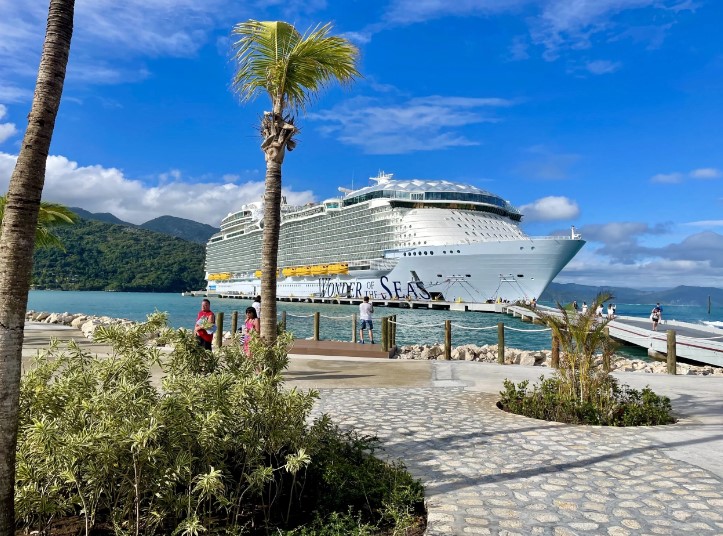Kathie Callum, director of sales for the adventure tour company Oku Japan, said they’ve had record-breaking sales that have met or surpassed 2019 levels. “There’s three years of suppressed demand that is all coming to the fore.”
Some Japanese travel agencies had to turn down customers interested in spring trips because of the high volume of bookings, JNTO spokesperson Midori Matsumoto said. The surge in demand will continue beyond spring’s busy cherry blossom season, and international travelers should plan accordingly.
“I cannot predict the future but I recommend booking anything you can in advance, such as tours, popular restaurants, museums, theme parks and so on,” Matsumoto said in an email.
What to know about covid and entry requirements
Travelers from the United States do not need visas for visits up to three months. They’re allowed to enter Japan with a valid coronavirus vaccination certificate or a negative result of a test taken within 72 hours of departure. As of November 2022, travelers can use a “Fast Track” service at Japan’s major airports to preregister for immigration, customs and vaccination review.
All mask guidelines for public spaces such as transportation, schools, theme parks and airlines were lifted on March 13, but you’re likely to encounter many people continuing to mask as they did before the pandemic. “There was always a tradition of mask-wearing in Japan,” Callum said.
“Some private companies and organizations can request that people wear a mask,” Callum said. “But typically it’s now left up to the person.”
Ahead of travel, the U.S. Embassy recommends consulting the latest regulations through the website of Japan’s Foreign Affairs Ministry. The embassy also warns travelers that “many common medications and over-the-counter drugs in the United States are illegal in Japan, regardless of whether you have a valid U.S. prescription.” That can include medications for colds, such as Sudafed, and for ADD/ADHD (Adderall), among others. Check the Ministry of Health, Labor and Welfare website and this FAQ for more information on banned prescriptions and general regulations.
Where to go beyond Tokyo, Osaka and Kyoto
Most people are seeking out classic Japan travel experiences, such as getting lost in the skyscraper mazes of Tokyo; visiting temples and experiencing tea ceremonies in Kyoto; and exploring street food in Osaka. “Absolutely, they want to see the classics,” said Jeffrey M. Krevitt, vice president of marketing for Inside Travel Group, which owns InsideJapan Tours. And “if it’s your first time to Japan, of course you have to go to Tokyo and Kyoto,” Heald said. “But then add one or two stops that are off the beaten path.” Here are some options.
- For the food scene: Hokkaido. While Tokyo is the city with the most Michelin stars in the world, Naomi Mano, president and chief executive of the Tokyo-based luxury travel company Luxurique, sends travelers to Japan’s northernmost prefecture for incredible eating and drinking — particularly seafood, Sapporo-style ramen and breweries. “The reason why people go there is because the food is great,” Mano said. Although, for the “best crab in the world,” she recommends Fukui prefecture.
- To see rural Japan: Shikoku. The smallest of Japan’s main islands is “almost like a secret place where you can see the outdoors and traditional life,” Krevitt said of Shikoku. Heald sends nature lovers to the island, which is home to one of Japan’s oldest hot spring resorts, Dogo Onsen.
- If you want a beach: Okinawa. Okinawa is home to Japan’s best beaches and scuba-diving opportunities, Mano said. A closer option to Tokyo — yet not a foreign-tourist magnet — is Hachijojima Island, accessible by boat or a 50-minute flight. “You can stick your feet in an onsen and watch whales,” she said. “Nobody really knows about it.”
Book where to stay — and eat — far in advance
Wherever you plan to go, lock in your accommodations as early as possible. As foreigners flood back into Japan and the country experiences a labor shortage in the hospitality industry, it may be a struggle to find accommodations for your trip dates, Callum and Heald say. That’s particularly true during busy travel periods, “even with the explosion of hotels that happened in the run-up to the Olympics, and even after the Olympics.”
There’s even more competition for smaller lodging options such as ryokans (traditional inns), hot spring resorts and temple stays. Nonetheless, Callum still encourages travelers to factor those traditional properties into their trip, even if it’s just for a few nights, to get “a great accommodation experience that you only get in Japan.” Weekends may be impossible at some, but you can look to stay on weekdays, when fewer domestic travelers book.
The same advice goes for other parts of your trip. Don’t leave your plans up to chance, and make reservations for restaurants, tea ceremonies and sporting events.
“If there’s anything you absolutely want to have as a part of your experience … I would definitely recommend booking those in advance as well simply because of the volume of people that are coming to Japan,” Callum said.
How to get around: Subways and the Japan Rail Pass
The best way to get around Japan is using its world-renowned train system, from the Tokyo subway to its long-distance trains. The etiquette for riding trains in Japan is much different from what in New York City or on Amtrak, so brush up on train manners before boarding.
For those planning on visiting multiple cities, consider buying a Japan Rail (JR) Pass ahead of your departure. Look at the prices of any individual train tickets you may buy, versus the cost of different passes to see if it’s a cost-effective move.
The passes, available specifically for foreign travelers in seven-, 14- or 21-day increments, can be purchased online or at overseas JR-designated sales offices or agencies. It’s not a one-size-fits-all situation. Callum recommends looking into the different regional rail passes. For a two-week trip, for example, Callum says it could make more sense to buy a standard Japan Rail Pass for one week, and a regional pass the next.
JR passes do not cover subways and trams within cities. You can make your life easier in Tokyo by buying day passes for the subway. For about $6, you can get a Tokyo subway ticket for unlimited travel on the Tokyo metro and Toei subway lines for the day. Two- and three-day tickets are just a couple bucks more.
What’s hot in 2023: Theme parks and forest bathing
Krevitt says more clients are asking about “forest bathing,” the Japanese practice of “taking in the atmosphere of the forest.” Forest bathing entails “walking through the forest and experiencing it in a very purposeful way,” he said. “It’s just sort of rejuvenating and refreshing.”
Krevitt’s picks for forest-bathing destinations include the Kumano Kodo pilgrimage trails; the Shinetsu trail; the woods surrounding Japan’s ancient capital, Nara; and Arashiyama in Kyoto.
But “there are so many places that you can go to forest bathe,” said Mano of Luxurique. Her top picks are the Kagoshima prefecture’s Kyushu Island and Yakushima Islands, one-fifth of which is a registered Natural World Heritage site. The island and its ancient cedar trees are accessible by jetfoil boat, ferry or a 40-minute flight.
Travelers can also forest bathe at Ghibli Park, the new 494-acre attraction with re-created sets from 14 classic movies made by the Studio Ghibli animation house. The park is several hours southwest of Tokyo, and built around an existing public space to minimize harm to the environment.
On the other end of the spectrum, Japan recently opened Super Nintendo World at Universal Studios Japan in Osaka, which is described as an escape from the natural world into a video game.






More Stories
Exploring the “Otaku Island” of Enoshima
Japan eases travel with eVisas
Should you visit Japan or South Korea?